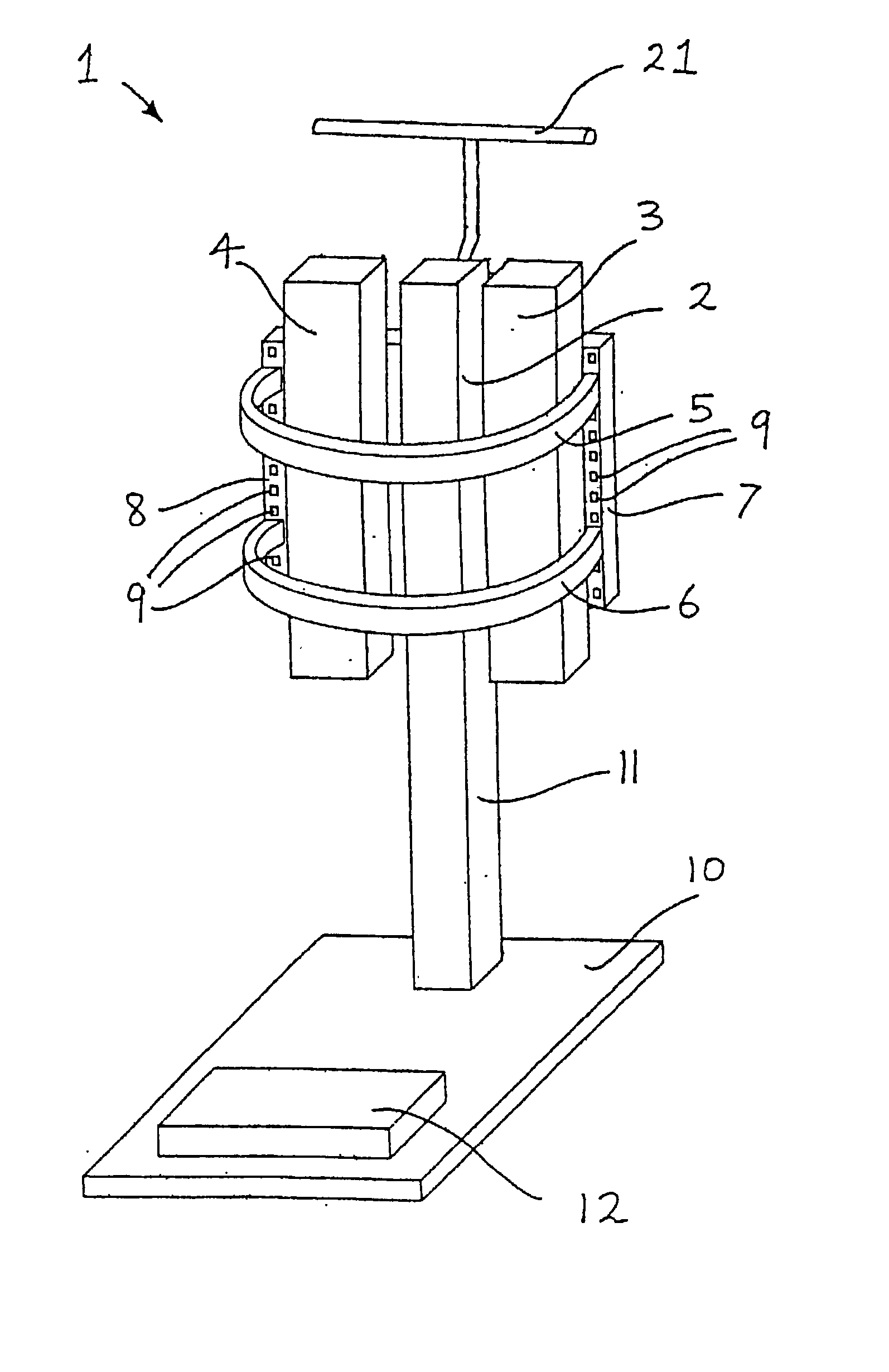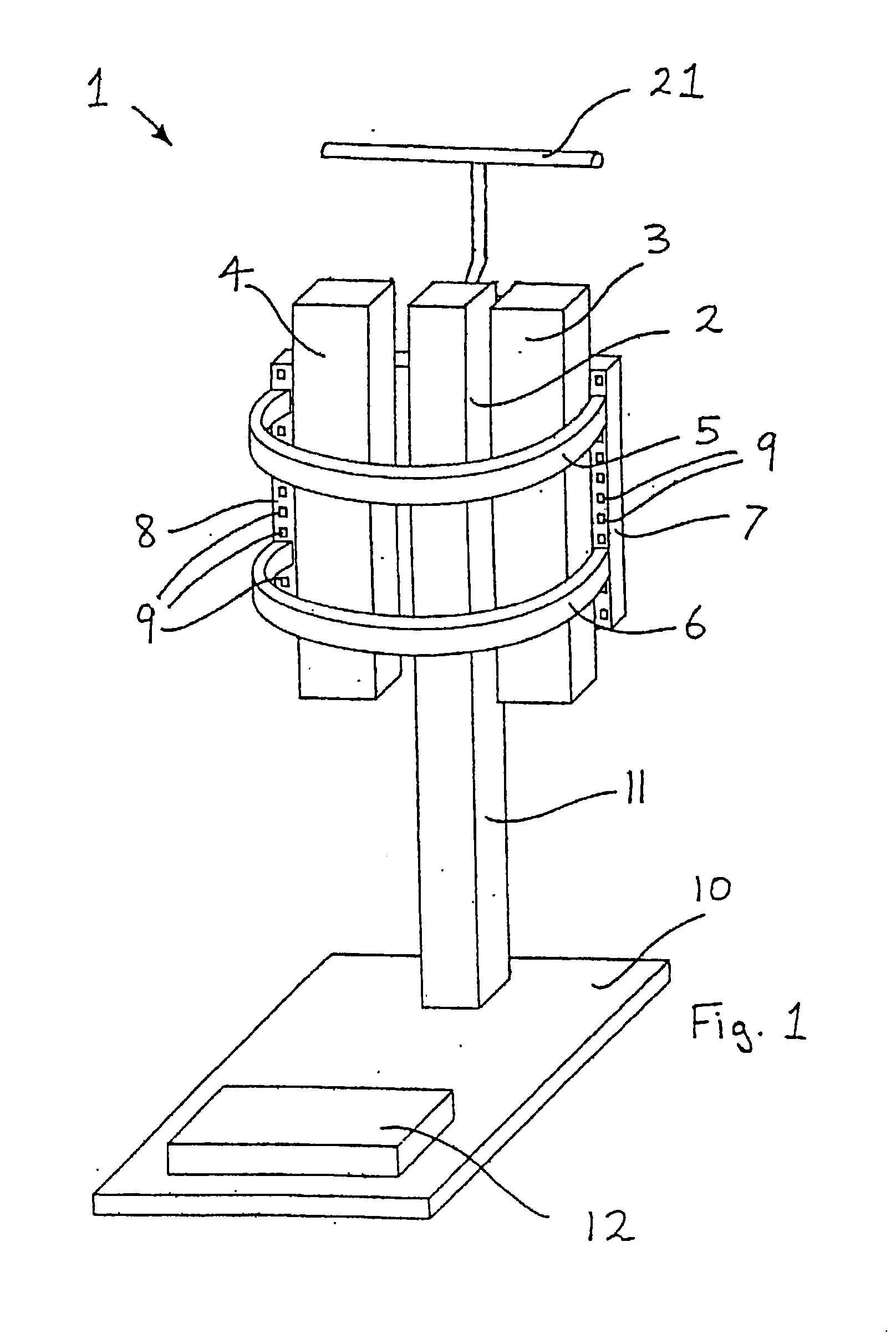Restraint and exercise device
a technology of exercise device and restraint, which is applied in the field of restraint and exercise device, can solve the problems of limited degree of movement of the lumbar spine, chronic back pain, and too many back pain to enumerate, and achieve the effect of improving range of motion, reducing pain, and reducing pain
- Summary
- Abstract
- Description
- Claims
- Application Information
AI Technical Summary
Benefits of technology
Problems solved by technology
Method used
Image
Examples
Embodiment Construction
[0032] The drawings illustrate various embodiments of a device for holding the pelvis of a user in any of a number of substantially fixed positions during exercise--for example, leg or back exercises. As a result, the user's pelvis is substantially inhibited from pivoting about the hip joint during back exercises. Instead, most of the exercising movement of the user's back is translated into a pivoting of the spine about the pelvis at the sacro-iliac joint. Similarly, during leg exercises the device ensures that substantially all movement of the leg is translated into a pivoting of the leg about the pelvis. In this case, the user's pelvis is substantially inhibited from pivoting about the sacro-iliac joint and lumbar spine. In other cases, the restraining belts can be used to inhibit movement from spinal segments between the belts, and facilitate movement at other segments above or below the belts. The user may be a patient suffering from pain or a healthy person who wishes to perfo...
PUM
 Login to View More
Login to View More Abstract
Description
Claims
Application Information
 Login to View More
Login to View More - R&D
- Intellectual Property
- Life Sciences
- Materials
- Tech Scout
- Unparalleled Data Quality
- Higher Quality Content
- 60% Fewer Hallucinations
Browse by: Latest US Patents, China's latest patents, Technical Efficacy Thesaurus, Application Domain, Technology Topic, Popular Technical Reports.
© 2025 PatSnap. All rights reserved.Legal|Privacy policy|Modern Slavery Act Transparency Statement|Sitemap|About US| Contact US: help@patsnap.com



